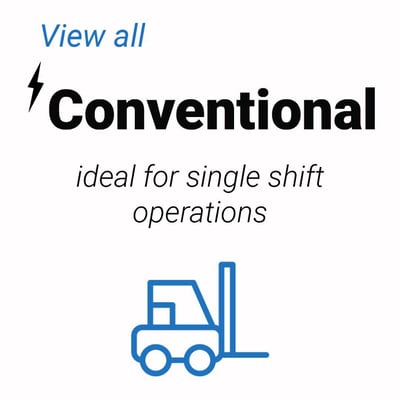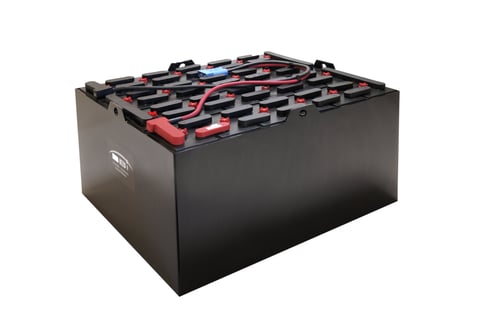
Designing Safe Forklift Batteries Charging Rooms
When it comes to maintaining a smooth and efficient operation within warehouses, manufacturing plants, and other industrial settings, forklift batteries play a crucial role. However, their charging process can present various safety hazards if not managed correctly. In this article, we will explore the essential elements involved in designing safe forklift batteries charging rooms. From understanding the potential risks to implementing best practices, we'll cover everything you need to know.
Understanding the Importance of Safe Forklift Batteries Charging Rooms
Charging forklift batteries isn't just about plugging them in; it's about ensuring the entire environment is conducive to safety and efficiency. So why do we need dedicated charging rooms for these powerful energy sources?
The Risks Associated with Forklift Battery Charging
One of the primary reasons for establishing a designated charging room is to mitigate risks associated with hydrogen gas emissions. When lead-acid batteries are charged, they release hydrogen gas—a highly flammable substance that poses explosion risks if not properly ventilated. Other hazards include:
- Acid Spills: Lead-acid batteries contain sulfuric acid which can be harmful if spilled.
- Overheating: Continuous charging without proper cooling can lead to battery overheating, causing damage or even fires.
- Equipment Damage: Poorly designed spaces may lead to accidental damage of equipment or batteries themselves.
Creating an Efficient Charging Space
Designing safe forklift batteries charging rooms involves more than just space allocation; it requires thoughtful planning and adherence to regulations.
- Proper ventilation is non-negotiable for any charging room. This ensures that any hydrogen gas released during charging is safely dissipated.
- Installing exhaust fans and ensuring there are adequate air exchange rates can significantly reduce risk levels.
- The flooring should be made from materials that resist corrosion from battery acid spills. Options include epoxy-coated concrete or specialized vinyl flooring.
- Walls should also be coated with similarly resistant materials.
- Fire extinguishers rated for chemical fires should be easily accessible.
- Implementing sprinkler systems can further enhance safety measures in case of an emergency.
- Clear signage informing employees of the hazards associated with forklift battery charging should be displayed prominently.
- Signs indicating emergency exits, fire extinguisher locations, and proper PPE (Personal Protective Equipment) requirements are essential.
- Regular training sessions on battery maintenance and emergency procedures can empower employees and minimize accident risks.
- Include drills for spills and fires to ensure everyone knows how to react appropriately.
By addressing these factors when designing safe forklift batteries charging rooms, organizations not only comply with safety regulations but also foster a culture of responsibility among employees regarding hazardous materials.
Best Practices for Safe Charging Room Design
Implementing best practices goes hand-in-hand with designing safe forklift batteries charging rooms. Here’s what you need to consider:
Layout Optimization
The layout of your charging room plays a significant role in its overall safety and functionality:
- Dedicated Zones: Create separate zones for battery storage, maintenance, and actual charging areas.
- Clear Pathways: Maintain clear pathways for easy movement of personnel and equipment—this minimizes accidents while transporting heavy loads or when emergencies arise.
- Accessibility: Ensure that all necessary tools and equipment are readily accessible without obstructing walkways or exits.
Utilizing Technology
Incorporating technology into your design can streamline processes while enhancing safety:
-
Battery Management Systems (BMS): These systems monitor battery health and performance in real-time, alerting users when maintenance is needed or when temperatures exceed safe levels.
-
Remote Monitoring: Implement remote monitoring systems that allow supervisors to oversee multiple charging stations from a centralized location.
Regular Maintenance Checklist
To ensure ongoing safety standards are met within your charging room, establish a regular maintenance checklist:
| Task | Frequency | |------------------------------------------|-------------------| | Inspect ventilation systems | Monthly | | Check acid-resistant surfaces | Quarterly | | Test fire extinguishers | Annually | | Review training records | Bi-annually |
By adhering to this checklist, facilities can proactively address potential issues before they escalate into serious problems.
Emergency Response Planning
Even with all precautions 12 volt flat plate forklift batteries taken, emergencies can still occur; therefore, having an emergency response plan is crucial:
These steps not only prepare your team but also instill confidence in their ability to manage unforeseen situations effectively.
FAQs About Designing Safe Forklift Batteries Charging Rooms
1. What types of forklifts use lead-acid batteries?
Most electric forklifts utilize lead-acid batteries due to their reliability and cost-effectiveness for warehouse operations.
2. How often should I charge my forklift batteries?
It's generally recommended to recharge lead-acid batteries after each shift or when they reach a discharge level of 30%.


3. What personal protective equipment (PPE) should be worn during battery handling?
Employees should wear gloves, goggles, face shields, aprons made from acid-resistant materials while handling forklift batteries during maintenance or replacement tasks.
4. How do I handle an acid spill in the charging room?
Immediately neutralize the acid using baking soda or another suitable material designed for this purpose before cleaning up according to local regulations.
5. Can I charge multiple forklifts at once?
While it’s possible depending on available space and amperage capacity of your electrical system, ensure that adequate ventilation is provided throughout the area regardless of how many units are being charged simultaneously.
6. What legal regulations must I follow when designing a battery charging room?
Regulations vary by region but typically include OSHA standards as well as local fire codes concerning hazardous materials storage and handling practices.
Conclusion
Designing safe forklift batteries charging rooms isn’t simply about compliance; it’s about fostering a workplace culture that prioritizes health and safety above all else. By understanding the risks involved with handling forklift batteries and implementing best practices tailored specifically toward mitigating those dangers—facilities can create environments where both people and equipment thrive safely together!
With proper planning combined with employee training programs centered on safety awareness—the ultimate goal becomes achieving operational excellence while minimizing potential hazards related directly back towards 72 volt flat plate forklift batteries our beloved forklifts!
